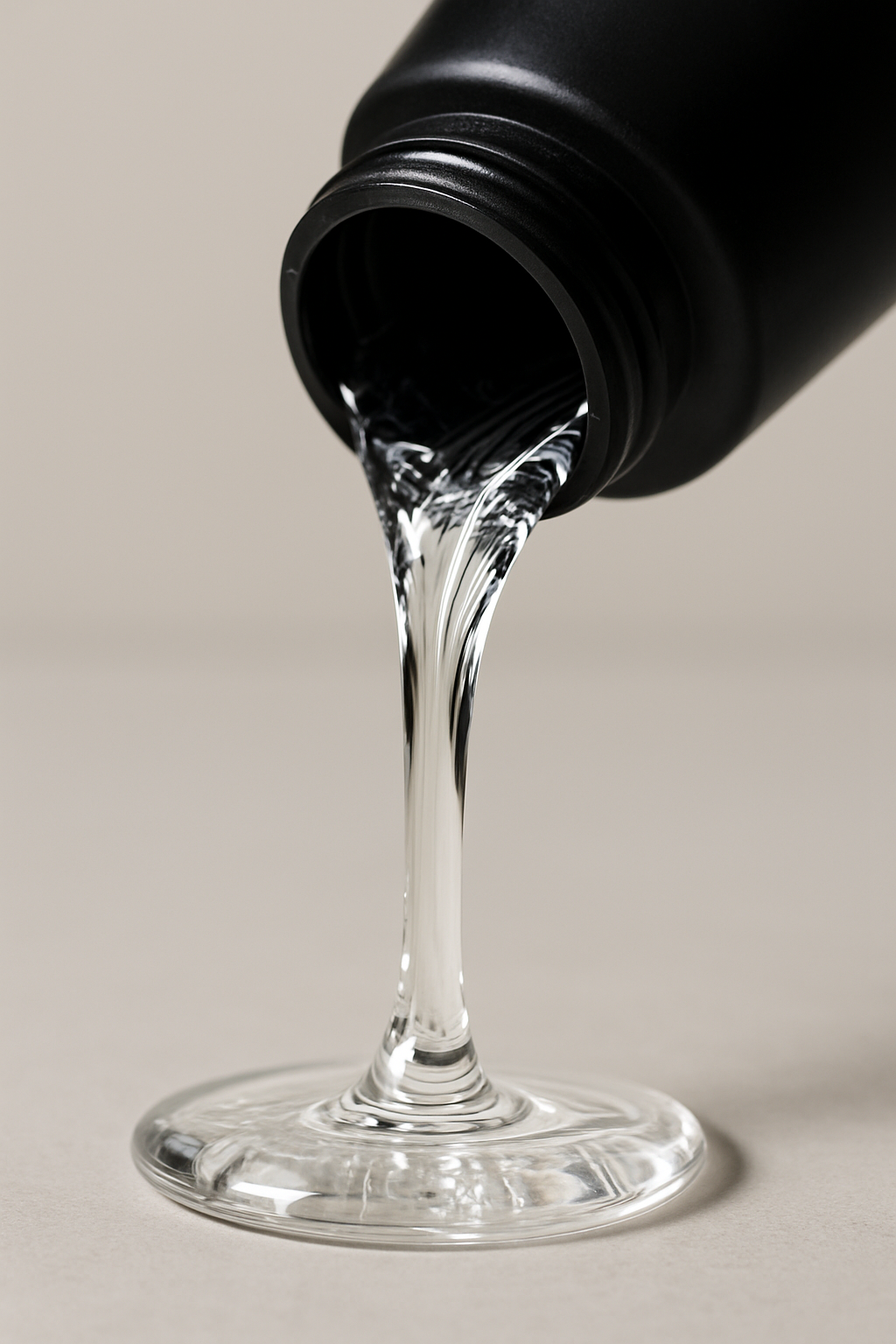Plastics (Polymers)
Plastics—more precisely thermoplastics—remain the largest and most widely used material group in 3D printing, especially in FDM/FFF processes (Fused Deposition Modeling / Fused Filament Fabrication). Their popularity stems from cost efficiency, versatility, and relatively easy processing.
-
PLA (Polylactide): Biodegradable, easy to print, low warping. Ideal for prototypes and hobby applications. Mechanically less robust than other plastics.
-
ABS (Acrylonitrile Butadiene Styrene): Higher impact resistance and temperature stability than PLA but prone to warping and often requires a heated build plate. Typical for functional prototypes and end-use parts with higher mechanical demands.
-
PETG (Polyethylene Terephthalate Glycol): Combines PLA’s ease of printing with ABS robustness. Good layer adhesion, high toughness, and chemical resistance. Popular for mechanically stressed parts and food-contact applications.
-
Nylon (Polyamides, e.g., PA6, PA12): Very high toughness, abrasion resistance, and chemical resistance. More challenging to print due to moisture sensitivity and warping but excellent for functional, durable parts like gears or hinges. PA12 is the standard material in SLS (Selective Laser Sintering) for high-performance, near-series plastic parts with isotropic properties.
-
TPU (Thermoplastic Polyurethane): Flexible, elastic, and abrasion-resistant. Ideal for seals, shock absorbers, or grips. Requires precise printer settings due to its flexibility.
In addition, specialty and high-performance polymers are gaining importance for demanding industrial applications, primarily in high-temperature FDM or SLS:
-
PEEK (Polyether Ether Ketone), PEKK (Polyether Ketone Ketone), and ULTEM (Polyetherimide, e.g., PEI 9085): These materials offer extremely high temperature resistance, outstanding mechanical strength, chemical resistance, and flame retardancy. They are used in aerospace (LEO applications), medical technology (biocompatible implants), automotive, and oil & gas industries for highly stressed components. Processing requires specialized printers with very high extrusion and build chamber temperatures.
Resins (Photopolymers)
Photopolymers, also known as resins, are primarily used in liquid-based 3D printing methods such as SLA (Stereolithography), DLP (Digital Light Processing), and LCD/MSLA (Masked Stereolithography). These processes selectively cure the resin with UV light.
-
Standard Resins: Provide particularly smooth, highly detailed surfaces and fine structures. Ideal for aesthetic prototypes, models, and casting molds. Typically brittle after curing.
-
Flexible/Elastic Resins: Have rubber-like properties, are stretchable, and absorb bending and shocks. Suitable for seals, grips, or flexible hinges.
-
Tough/Durable Resins: More impact-resistant and tougher than standard resins, offering better fracture resistance for functional prototypes or mechanically stressed end parts.
-
High-Temperature Resins: Can withstand short-term or continuous high temperatures, ideal for tools, molds, or test fixtures in thermal environments.
-
Biocompatible Resins: Certified for medical applications such as dental models, surgical guides, or prosthetics.
-
Castable Resins: Leave minimal ash residues after burnout in a furnace, making them ideal for precision casting (e.g., jewelry or dental parts).
Post-processing (cleaning and post-curing) is essential to achieve the final material properties.
Powder-Based Materials (Plastic and Metal)
Powder-based 3D printing processes use fine, flowable powders that are selectively sintered or melted layer by layer.
-
Plastic Powders (SLS): PA12 (Polyamide 12) is the dominant material here. It offers excellent mechanical properties, high impact resistance, and chemical stability. PA12 parts are more porous than injection-molded parts but can be densified by infiltration (e.g., with epoxy). SLS enables the production of complex geometries without support structures (the unsintered powder acts as support), allowing high design freedom and build volume utilization. Ideal for functional prototypes, small series, and complex lattice structures.
-
Metal Powders (SLM / DMLS): In SLM (Selective Laser Melting) and DMLS (Direct Metal Laser Sintering), metal powders are fully melted and fused using a laser. This produces fully dense metal parts with material properties often matching or exceeding conventionally manufactured parts.
-
Aluminum alloys (e.g., AlSi10Mg): Lightweight, good thermal conductivity, corrosion resistant. Used in aerospace and automotive for lightweight structural parts and heat exchangers.
-
Stainless steel (e.g., 1.4404 / 316L, 17-4PH): High strength, corrosion resistance, good biocompatibility (316L). Used in medical technology, toolmaking, and chemical industries.
-
Titanium alloys (e.g., Ti6Al4V): Extremely high strength-to-weight ratio, excellent biocompatibility and corrosion resistance. Ideal for aerospace, medical implants, and motorsport.
-
Nickel-based alloys (e.g., Inconel 718, Hastelloy X): Excellent high-temperature strength, corrosion resistance, and creep resistance. Essential for turbines (aerospace, power generation), exhaust systems, and oil & gas.
-
Tool steels (e.g., Maraging Steel MS1): Enable manufacturing of precision tools or mold inserts with integrated complex cooling channels, significantly reducing cycle times in injection or die casting.
-
Metal part production is process- and cost-intensive but enables manufacturing of high-performance, complex components that are otherwise difficult to produce.
Ceramics and Special Materials
Although still niche, ceramic materials are gaining importance for specific high-demand applications, usually via binder jetting, stereolithography with ceramic slurry, or ceramic paste extrusion.
-
Technical Ceramics (e.g., Zirconia, Alumina, Silicon Carbide): Offer extreme hardness, temperature resistance, chemical inertness, and electrical insulation. Used in medical technology (dental and bone implants), chemical industry, aerospace, and as catalyst supports. Post-processing usually involves high-temperature sintering.
-
Composite Materials: Filaments reinforced with carbon fibers, glass fibers, or metal particles. These improve mechanical properties (strength, stiffness), electrical conductivity, or aesthetics.
-
Biomaterials: In bioprinting, cell-laden hydrogels or biodegradable polymers are printed to create tissues and organs for research or transplantation.
-
Sand / Gypsum (Binder Jetting): Mainly for sand casting molds or architectural models and art objects. Cost-effective for large parts.
Conclusion: Material Choice as a Strategic Success Factor
3D printing is no longer just about plastics; it has evolved into a versatile manufacturing technology covering a broad spectrum of materials. Material selection is absolutely critical and must be precisely tailored from the start to the intended function, mechanical loads, environmental conditions (temperature, chemicals), lifespan, and cost of a part. Making an informed decision requires not only material knowledge but also a deep understanding of the respective 3D printing processes and their limitations.
AM Worx offers individual, practical consulting to help you find the perfect combination of materials and processes for your specific application. We support you in pushing the boundaries of what is possible and realizing innovative products with optimal properties.
